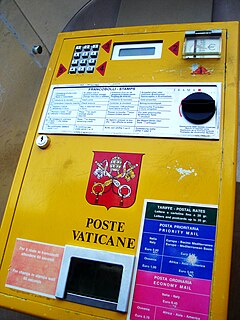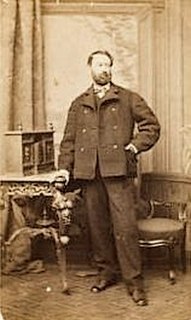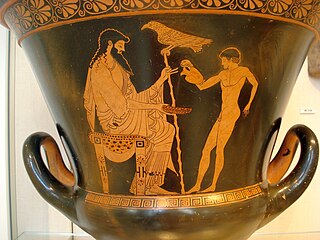Contents
This is a list of museums in Vatican City.
This is a list of museums in Vatican City.
| Wikimedia Commons has media related to Museums in the Vatican City . |
In Etruscan mythology, Nethuns was the god of wells, later expanded to all water, including the sea. The name "Nethuns" is likely cognate with that of the Celtic god Nechtan and the Persian and Vedic gods sharing the name Apam Napat, perhaps all based on the Proto-Indo-European word *népōts "nephew, grandson." In this case, Etruscan may have borrowed the Umbrian name *Nehtuns.

The Vatican Museums are the public museums of the Vatican City. They display works from the immense collection amassed by the Catholic Church and the papacy throughout the centuries, including several of the most renowned Roman sculptures and most important masterpieces of Renaissance art in the world. The museums contain roughly 70,000 works, of which 20,000 are on display, and currently employ 640 people who work in 40 different administrative, scholarly, and restoration departments.
The Lateran Museum was a museum founded by the Popes and housed in the Lateran Palace, adjacent to the Archbasilica of Saint John Lateran in Rome, Italy. It ceased to exist in 1970.
Oltos was a Late Archaic Greek vase painter, active in Athens from 525 BC to 500 BC. About 150 works by him are known. Two pieces, a cup in Berlin and a cup in Tarquinia, are signed by him as painter.

The Colonna Venus is a Roman marble copy of the lost Aphrodite of Cnidus sculpture by Praxiteles, conserved in the Museo Pio-Clementino as a part of the Vatican Museums' collections. It is now the best-known and perhaps most faithful Roman copy of Praxiteles' original.

An Apollo Citharoedus, or Apollo Citharede, is a statue or other image of Apollo with a cithara (lyre). Among the best-known examples is the Apollo Citharoedus of the Vatican Museums, a 2nd-century AD colossal marble statue by an unknown sculptor. Apollo is shown crowned with laurel and wearing the long, flowing robe of the Ionic bard. The statue was found in 1774, with seven statues of the Muses, in the ruins of Gaius Cassius Longinus' villa near Tivoli, Italy. The sculptures are preserved in the Hall of the Muses, in the Museo Pio-Clementino of the Vatican Museums.

The Barberini Hera or Barberini Juno is a Roman sculpture of Hera or Juno, copied from a Greek original. Excavated in Rome in the late 16th century, it is preserved in the Museo Pio-Clementino.

Giovanni Volpato (1735–1803) was an Italian engraver. He was also an excavator, dealer in antiquities and manufacturer of biscuit porcelain figurines.

The Philatelic and Numismatic Office of the Vatican City State is responsible for issuing Vatican postal stamps and Vatican coins.

Giampietro Campana, created marchese di Cavelli (1849), was an Italian art collector who assembled one of the nineteenth century's greatest collection of Greek and Roman sculpture and antiquities. The part of his collection of Hellenistic and Roman gold jewellery conserved in the Musée du Louvre warranted an exhibition devoted to it in 2005–06. He was an early collector of early Italian paintings, the so-called "primitives" of the fourteenth and fifteenth centuries, which were overlooked by his contemporaries. And like many collectors of his generation, he coveted Italian maiolica of the 15th and 16th centuries.

Eucharides Painter is the common nickname of an ancient Greek artist who decorated but did not sign Attic vases. Neither his real name, nor the dates of his birth and death are known. Presumably this artist was a pupil of the Nikoxenos Painter.
This is an index of Vatican City–related topics.

The Museo Pio Cristiano is one of the Vatican Museums. It houses various works of Christian antiquity.

Tleson was an Attic potter and perhaps also a vase painter in the black-figure style. He was the son of the famous potter Nearchos and brother of Ergoteles. His workshop apparently produced mostly Little-master cups. Most of his vases were painted by the Tleson Painter, whose real name is unknown, and whose conventional name is derived from Tleson. Based on the fact that vases known by that hand so far are only ever signed by Tleson, John Beazley suggested that Tleson and the Tleson painter may be identical. There is no proof for this hypothesis. Some of Tleson's pots were painted by other artists, such as Oltos and the Centaur Painter.

The Phrynos Painter was an Attic black-figure vase painter, active in Athens between c. 560 and 545 BC. He was allocated the conventional name "Phrynos Painter" after the potter Phrynos, as he had painted three cups signed by the latter:

The Taleides Painter was an Attic vase painter of the black-figure style, active in the second half of the 6th century BC. His conventional name is derived from his close cooperation with the potter Taleides, many of whose vases he painted. He also worked for the potter Timagoras.

The Arkesilas Painter was a Laconian vase painter active around 560 BC. He is considered one of the five great vase painters of Sparta.

Museo Valenzuela is a museum in Valenzuela in Metro Manila, Philippines. It is the city's historical and cultural landmark, named after Dr. Pío Valenzuela in 1963. Museo Valenzuela features collections of artifacts depicting the city's past and continuing development, it also serves as a repository of the city's rich heritage and a beacon of light to its people and guests. It is likewise a venue for historical, cultural, and artistic presentations as well as seminars and symposia on national and local issues.

Bramante Staircase is the name given to two staircases in the Vatican Museums in the Vatican City State: the original stair, built in 1505, and a modern equivalent from 1932.